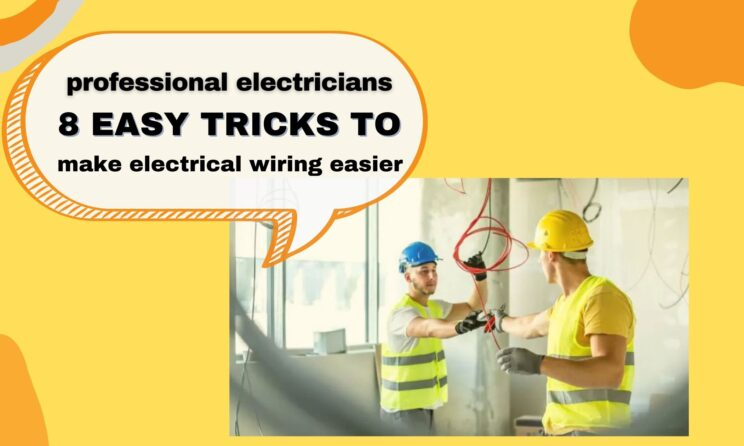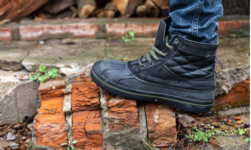
Electrical wiring is indeed a vast subject in itself professional electricians. Even the most experienced electrician with years of exposure in the industry has to pick up a few tricks every now and then. It is never that these accomplished tradesmen ignored or overlooked something while learning the rope. The subject is so wide and over-stretched that practically it is not possible for any individual to master everything in a lifetime. In the following sections of this blog post let us explore few uncommon tricks that help you complete your wiring job faster, better and neater.
Tricks and tips to deal with the task of electrical wiring faster and easier
While uncoiling the cable make sure it does not twist or kink
When you straighten out the cable first then pulling it through the framing holes becomes much easier. Here is a trick to make the straightening task easier; lift a handful of coils from the centre of the roll. Toss those coils across the floor like throwing a rope. As you walk along the cable, go on straightening it. This is how you can get the cable straightened easily. It is relevant mentioning that four loops of a coil usually cover about a length of 12 metres. Most electricians prefer this tactic. It enables the cable to stay inside the plastic cover which makes the cable easier to handle and neater storage.
Electrical boxes must be neatly packed
An overstuffed electrical box is a common issue faced by electricians working on wiring projects. It is important to have these boxes packed neat and compact. Here is a tip to help you achieve the target; gather all the bare ground wires. Do not miss out even a long pigtail. Connect those together and fold those at the back of box. While doping this just leave the pigtail extended. Follow the same tactic with the neutral wires. While connecting switches there is no need for a neutral pigtail. You should leave the live wire extra long. Fold the live wire back and forth across the bottom of the box. To carry out neat rewiring London you should better place a wire connector cap on live wire. This makes identification easier later on.
An electrical box that is packed neatly makes it easier indentifying the wires. Moreover is leaves sufficient space for switches.
For UF (underground feeder) cables removing sheathing is important
Underground feeder cable (also known as UF cable) is buried directly in the ground and is not run through conduits. This becomes possible because it has a tough plastic sheathing. But removing that sheathing also turns out to be a difficult task unless you know the trick. What is that trick? Let us find out!
You have to separate the black and the white wires from the bare copper. You do it by grabbing each of the wires by pliers and twisting at the same time. you have to pull the two apart till there is about a foot of the wires separated.
At this stage you have to remove the sheathing from the insulated wires. You do this by grabbing the end of the wire with a set of pliers and the sheathing with another set of pliers while working the two apart. Once the sheathing at the top gets separated you just have to peel it off. Cut the loose sheathing with a knife or a pair of scissors.
Problem-free connection of the fish tape
Sending the fish tape to its destination is a troublesome task. But once it has gone into its place obviously you do not want to lose the cable. Neither do you want the tape gets stuck on something inside the wall while you pull it back. How you can avoid these possibilities? Here is a tip professional electricians.
First strip the cable about 8 inches. Make use of side cutters cut off all the wires barring one. Make sure you make the cut at a steep angle so that there is no shoulder of the cable to catch on something or the other. You have to bend the single wire around the loop on the end of the fish tape. Use an electrical tape to wrap up the entire thing into a smooth bundle. At this stage you can fish and push the wire as required. There is no chance of it getting caught on any obstruction explains a qualified and registered house rewire London
Crucial tools you cannot do without
You need two tools to carry out any electrical work; the tools are flexing bits and glow rods. These tools enable professional electricians to fish wires easily. Flex bits help you drill holes in spaces that are difficult to access. 5 feet and 6 feet are the two commonly used lengths although extensions are also available pretty easily. After drilling a hole shove the glow rod through the hole to fish the wire. Attach the wire to the eyelet and pull it back through. Glow rods glow in the dark. So it is easier to spot even when you are working in the dark.
Always push through little more wire
Always you should push through excess wire to hook on to while fishing wire to pull it in your direction. At times grabbing a hold on wire becomes difficult and once you have it hooked, it is difficult to let it go. You should have at least 4 to 6 feet of excess wire to maintain tension on the hook while you pull through it.
Use a non label coding for wires
As you install wires keep identifying those. It saves you or any other electrician for that matter a lot of headache later. Use a code to mark the installed wires or you can label the wires at the bottom. But in those cases you may face difficulty from unexpected quarters. By the time you return to connect the switches and the electrical outlets, your code or label is likely to get covered or knocked off thanks to the work of painters, tapers and those who build drywalls. This is the reason why we suggest using a non label coding wherever you can instead of codes and labels. You should rather develop a system of your own and maintain regular notes. This is really a more professional approach that saves you time and effort in the long run.
Always test wires before touching
Professionally trained and experienced electricians at Electric Works London suggest always use a noncontact voltage detector to check every single wire in an area or wire box where you are working. You should make it a habit to always check the tester always on an electrical cord or wire. You will proceed only after making sure it is not live. This is the best way to ensure a safe working environment professional electricians.






